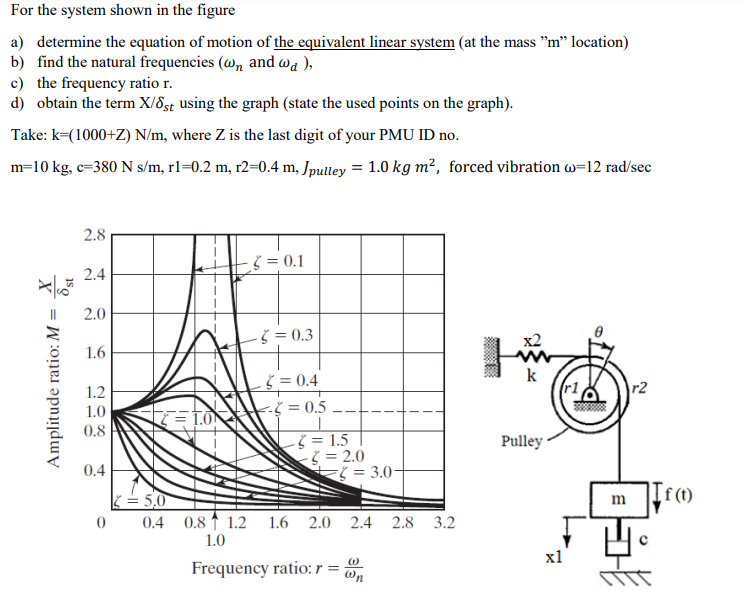Home /
Expert Answers /
Mechanical Engineering /
for-the-system-shown-in-the-figure-a-determine-the-equation-of-motion-of-the-equivalent-linear-sy-pa363
(Solved): For the system shown in the figure a) determine the equation of motion of the equivalent linear sy ...
For the system shown in the figure a) determine the equation of motion of the equivalent linear system (at the mass " \( \mathrm{m} \) " location) b) find the natural frequencies \( \left(\omega_{n}\right. \) and \( \left.\omega_{d}\right) \), c) the frequency ratio \( r \). d) obtain the term \( \mathrm{X} / \delta_{s t} \) using the graph (state the used points on the graph). Take: \( \mathrm{k}=(1000+\mathrm{Z}) \mathrm{N} / \mathrm{m} \), where \( \mathrm{Z} \) is the last digit of your PMU ID no. \( \mathrm{m}=10 \mathrm{~kg}, \mathrm{c}=380 \mathrm{~N} \mathrm{~s} / \mathrm{m}, \mathrm{rl}=0.2 \mathrm{~m}, \mathrm{r} 2=0.4 \mathrm{~m}, J_{\text {pulley }}=1.0 \mathrm{~kg} \mathrm{~m}^{2} \), forced vibration \( \omega=12 \mathrm{rad} / \mathrm{sec} \) Frequency ratio: \( r=\frac{\omega}{\omega_{n}} \)
Expert Answer
General Guidance The answer provided below has been developed i
